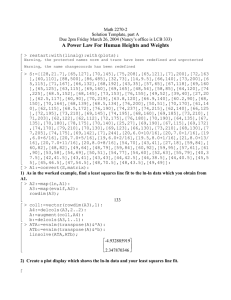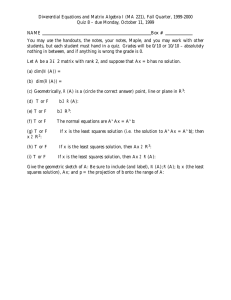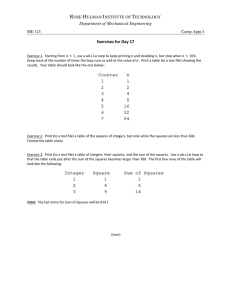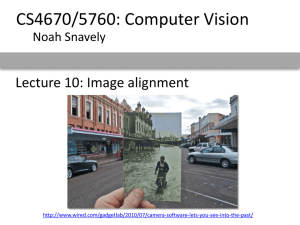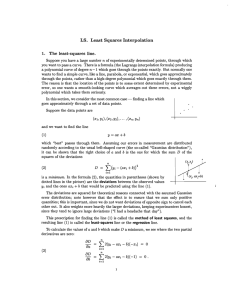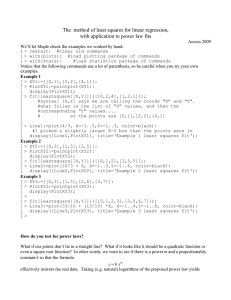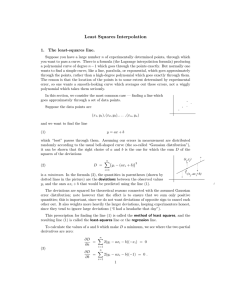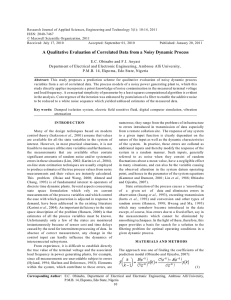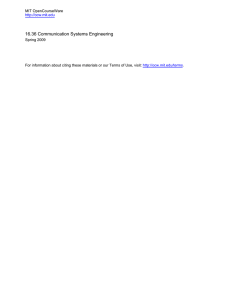> with(linalg): f:=x->2+3*x+log(x); (1)
advertisement
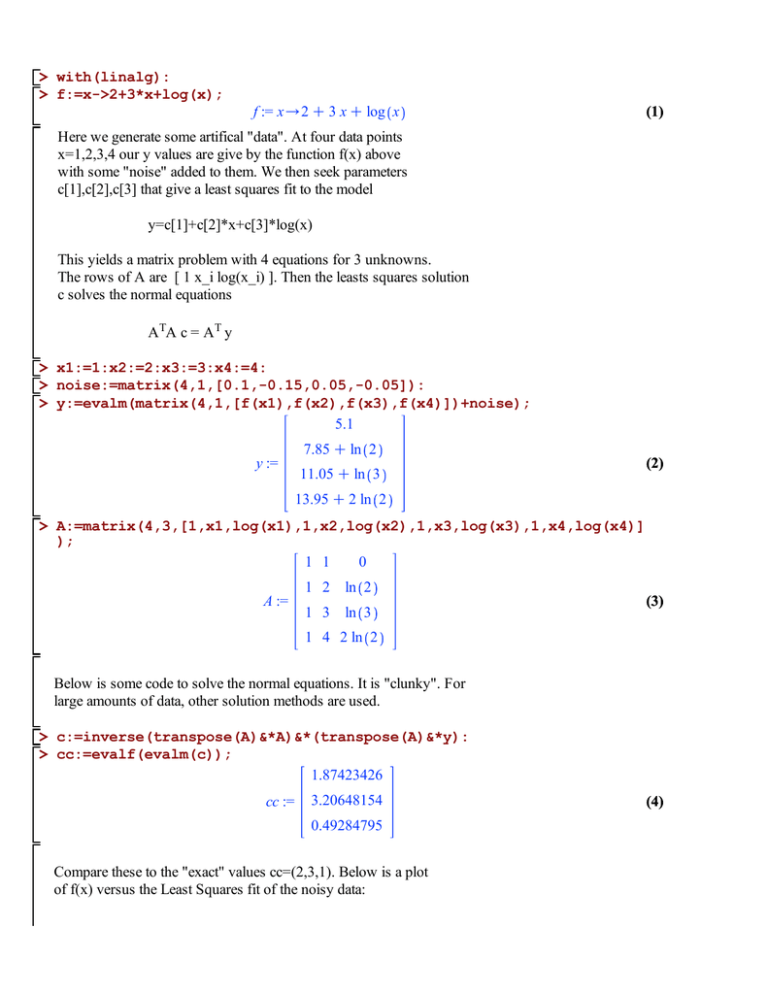
> with(linalg): > f:=x->2+3*x+log(x); f := x/2 C 3 x C log x (1) Here we generate some artifical "data". At four data points x=1,2,3,4 our y values are give by the function f(x) above with some "noise" added to them. We then seek parameters c[1],c[2],c[3] that give a least squares fit to the model y=c[1]+c[2]*x+c[3]*log(x) This yields a matrix problem with 4 equations for 3 unknowns. The rows of A are [ 1 x_i log(x_i) ]. Then the leasts squares solution c solves the normal equations ATA c = AT y > x1:=1:x2:=2:x3:=3:x4:=4: > noise:=matrix(4,1,[0.1,-0.15,0.05,-0.05]): > y:=evalm(matrix(4,1,[f(x1),f(x2),f(x3),f(x4)])+noise); 5.1 y := 7.85 C ln 2 11.05 C ln 3 (2) 13.95 C 2 ln 2 > A:=matrix(4,3,[1,x1,log(x1),1,x2,log(x2),1,x3,log(x3),1,x4,log(x4)] ); 1 1 0 A := 1 2 ln 2 1 3 ln 3 (3) 1 4 2 ln 2 Below is some code to solve the normal equations. It is "clunky". For large amounts of data, other solution methods are used. > c:=inverse(transpose(A)&*A)&*(transpose(A)&*y): > cc:=evalf(evalm(c)); 1.87423426 cc := 3.20648154 0.49284795 Compare these to the "exact" values cc=(2,3,1). Below is a plot of f(x) versus the Least Squares fit of the noisy data: (4) > plot([f(x),cc[1,1]+cc[2,1]*x+cc[3,1]*log(x)],x=0..4); 15 10 5 0 1 2 x K5 3 4
